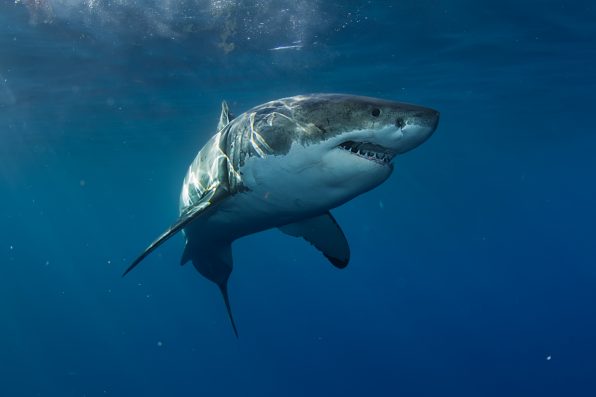In Mexico, Fossils Of The Great White Shark’s Ancient Relative That Lived Alongside Dinosaurs Have Been Unearthed

In Mexico, complete fossils of the great white shark’s ancient relative that lived alongside the dinosaurs have been unearthed.
The discovery was made in a limestone quarry in Nuevo León, which is located in northeastern Mexico. Details of the study were published in the journal Proceedings of the Royal Society B: Biological Sciences.
The well-preserved bones of the creature date back to the Cretaceous period. It was of the genus Ptychodus, an extinct group of durophagous sharks that had large teeth.
Paleontologists believe the shark could have reached up to 30 feet long, making it much bigger than modern great white sharks.
“The discovery of complete Ptychodus specimens is really exciting because it solves one of the most striking enigmas in vertebrate paleontology,” Romain Vullo, the lead author of the study and a researcher at Géosciences Rennes, said.
Sharks from the genus Ptychodus were first found in the 18th century. Their teeth, which could be nearly 22 inches long and 18 inches wide, were discovered in multiple marine deposits. They were made for crushing shells rather than flesh.
With only the teeth to base their studies on, experts were in disagreement over what the body shape of Ptychodus looked like.
Now, the newfound fossils have provided researchers with a better idea of the shark’s body shape. The creature’s build suggests that it hunted sea turtles, which may explain why it became extinct around 76 million years ago.
“Ptychodus occupied a special ecological niche in the Late Cretaceous seas,” Vullo said. “Toward the end of the Cretaceous, these large sharks were likely in direct competition with some marine reptiles (mosasaurs) targeting the same prey.”

willyam – stock.adobe.com – illustrative purposes only
The fossils were located in a “quiet area with no scavengers.” After the deaths of the sharks, their carcasses were quickly buried in soft mud that kept them well-preserved.
An analysis of the bones revealed that the predator belonged to Lamniformes, the mackerel shark family.
Previously, it was thought that Ptychodus fed on invertebrates, the ancient relatives of clams and mussels.
However, the new fossils counter that assumption. They show that the shark had a streamlined shape, indicating that it had the ability to swim exceptionally fast.
So, researchers now believe that it preyed on sea turtles and large ammonites, a type of crustacean with a hard shell.
There is still a lot to learn about the species. Hopefully, other shark specimens from the Cretaceous period that have yet to be studied will help researchers paint a clearer picture of this ancient relative of the great white shark.
Sign up for Chip Chick’s newsletter and get stories like this delivered to your inbox.
More About:News